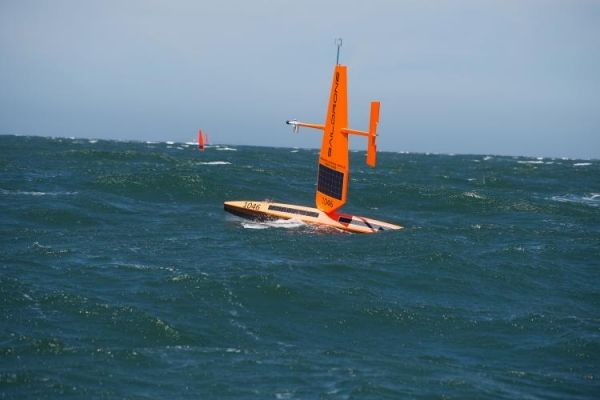Every other year, NOAA Fisheries conducts an acoustic-trawl survey from crewed research vessels to measure pollock abundance in Alaska’s eastern Bering Sea. As a result of COVID-19, many research surveys were canceled, and we weren’t able to conduct our walleye pollock surveys. Data collected from these surveys are critical to manage pollock, which comprise the nation’s largest commercial fishery.
NOAA Fisheries scientist Alex De Robertis at the Alaska Fisheries Science Center developed a contingency plan: conducting the survey with saildrone wind- and solar-powered ocean-going robots. The hope was to collect some data despite the vessel survey cancellation.
For the past several years, De Robertis and colleagues at the Alaska Fisheries Science Center have been working with partners at NOAA Research’s Pacific Marine Environmental Laboratory, Saildrone and Kongsberg. They use uncrewed surface vehicles equipped with low-power sonar (acoustic) sensors to conduct research in the Bering and Chukchi Seas. The pollock survey contingency plan was an opportunity to apply what they had learned to collect data for resource management.
Continue reading at NOAA Fisheries
Image via NOAA Fisheries


